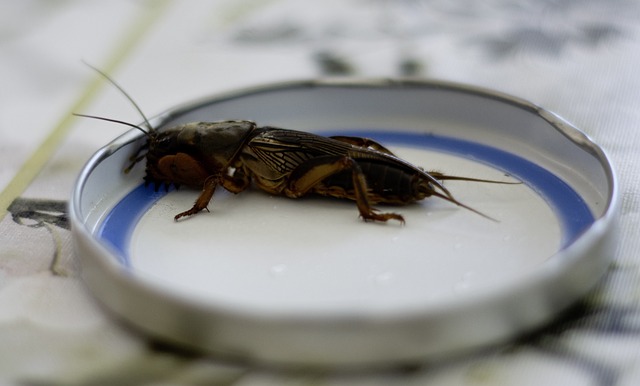Bed bugs, tiny bloodsucking insects, infiltrate homes and businesses through cracks and seams, hiding in dark areas during the day and attacking at night. Professional pest control is essential for effective bed bug treatment, utilizing advanced techniques and specialized products to eradicate them from hard-to-reach spots. Integrated Pest Management (IPM) offers proactive measures like sealing entry points and regular cleaning for prevention. After successful treatment, proper post-care, including deep cleaning, inspections, and hygiene practices, prevents reinfestation, ensuring a pest-free environment.
“Protecting your space from bed bugs is paramount for any homeowner or business owner. This comprehensive guide delves into the world of expert consultations, offering a crucial step in effective bed bug treatment. We explore common infestation points and behaviors, highlighting the indispensable role of professional pest control. Additionally, we provide actionable strategies for prevention and control, ensuring long-term protection. By understanding these measures, you can take charge of your environment and safeguard against these persistent pests.”
Understanding Bed Bug Infestations: Common Entry Points and Behavior
Bed bugs are tiny, flat insects that feed on human blood, and they’re relentless in their pursuit of suitable habitats. Understanding their behavior is crucial when it comes to effective bed bug treatment. These pests can enter homes and businesses through various entry points, such as cracks in walls, floors, or furniture seams, often carried in by infested items like used furniture, luggage, or clothing. Once inside, they prefer warm environments and hide in dark, secluded areas during the day, becoming active at night when they bite.
Recognizing their common hiding spots is essential for pest-proofing. Mattresses, box springs, headboards, and furniture are prime real estate for bed bugs, as are cracks in floors, baseboards, and even electrical outlets. Their ability to travel along pipes and cables means they can quickly spread throughout a building, making early detection vital for successful bed bug treatment.
The Role of Professional Pest Control in Effective Bed Bug Treatment
Professional pest control plays a pivotal role in effective bed bug treatment. Unlike do-it-yourself methods, which may offer temporary relief, experts employ advanced techniques and products designed specifically to target and eliminate bed bugs at their source. These professionals have extensive knowledge of bed bug behavior, allowing them to navigate the intricate web of hiding places—from mattresses and box springs to wall crevices and floorboards—to ensure a thorough treatment.
Their expertise includes identifying the extent of the infestation, using safe yet powerful pesticides, and providing preventive measures to stop bed bugs from returning. By relying on professionals, homeowners and business owners can rest assured that their spaces are treated safely and effectively, minimizing disruption while maximizing results in bed bug treatment.
Comprehensive Strategies for Home and Business Owners: Prevention and Control
Pest-proofing is a proactive approach that combines prevention and control strategies, ensuring homes and businesses remain free from unwelcome visitors. For homeowners and business owners alike, an integrated pest management (IPM) plan is key to maintaining a healthy environment. This involves identifying potential entry points for pests and sealing them off, as well as implementing regular cleaning routines to minimize attractants like food debris and clutter.
A critical component of effective pest control is professional consultation, especially when dealing with persistent or severe infestations like bed bugs. Expert inspectors can pinpoint the sources of infestation and recommend tailored solutions that include targeted treatments, behavioral modifications, and educational advice for property occupants. Bed bug treatment, for instance, requires a multi-faceted approach—from identifying and eliminating hiding spots to applying eco-friendly pesticides—all guided by professionals who understand the behavior and life cycle of these resilient pests.
Post-Treatment Care and Maintenance: Ensuring Long-Term Protection
After a successful pest control treatment, especially for stubborn invaders like bed bugs, proper post-treatment care and maintenance are crucial to ensure long-term protection. This includes thoroughly cleaning all affected areas, washing linens and clothing in hot water, and vacuuming floors and furniture to remove any remaining eggs or nymphs. Regular inspections are also vital; checking for new infestations every few weeks can help detect any early signs of a recurring issue.
Additionally, sealing entry points such as cracks and gaps in walls or doors is essential to prevent future invasions. Maintaining good hygiene practices by regularly sanitizing high-risk areas like kitchens and bathrooms further contributes to pest-free environments. Remember, consistent vigilance and these simple maintenance steps can significantly extend the lifespan of your bed bug treatment, providing lasting peace of mind for both homes and businesses.
When it comes to bed bug treatment, a proactive approach is key. By understanding common entry points and implementing comprehensive strategies, both home and business owners can effectively prevent and control these persistent pests. Expert consultations play a vital role in this process, offering tailored solutions and peace of mind. Remember, regular maintenance after treatment is crucial for long-term protection against bed bugs and other pests.
